Da-Da-Da-Dump (snap) (snap)
Da-Da-Da-Dump Da-Da-Da-Dump Da-Da-Da-Dump (snap) (snap)
Sing those bars of music to most adults, and they will instantly recognize the source: the gloriously wonderful television series from 1963 starring John Astin and Carolyn Jones called “The Addams Family”:
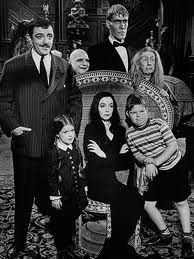
This was the first excursion for the family of characters created by cartoonist Charles Addams for the New Yorker Magazine. They have since gone through numerous movie adaptations, but have always kept their spirit of being the non-normal family that you love. I mention all of this because I fell in love with them again last night at the Pantages, with an almost perfect production of the musical version of “The Addams Family“.
 The musical version of The Addams Family was not based on the television or the movies, although given that they drew upon the same characters, there are some commonalities. The musical, with book by Marshall Brickman and Rick Elice and music/lyrics by Andrew Lippa, was based on characters from the original Charles Addams cartoons: Gomez, Morticia, Fester, Wednesday, Pugsley, Lurch, and Grandma (these characters were named for the TV show; they were unnamed in the cartoons). Now Addams stories usually take one of two forms: normal family visits the Addams and is shocked by the family, or the Addams have to appear normal to another family. In the original Broadway production, this was roughly the form of the story: Normal family of Wednesday’s boyfriend comes to visit, so the family needs to behave normally. Meanwhile, Morticia thinks she is getting old, family is shocked by the Addams, and Wednesday is pulled in different directions by love. You can read the original synopsis on Wikipedia.
The musical version of The Addams Family was not based on the television or the movies, although given that they drew upon the same characters, there are some commonalities. The musical, with book by Marshall Brickman and Rick Elice and music/lyrics by Andrew Lippa, was based on characters from the original Charles Addams cartoons: Gomez, Morticia, Fester, Wednesday, Pugsley, Lurch, and Grandma (these characters were named for the TV show; they were unnamed in the cartoons). Now Addams stories usually take one of two forms: normal family visits the Addams and is shocked by the family, or the Addams have to appear normal to another family. In the original Broadway production, this was roughly the form of the story: Normal family of Wednesday’s boyfriend comes to visit, so the family needs to behave normally. Meanwhile, Morticia thinks she is getting old, family is shocked by the Addams, and Wednesday is pulled in different directions by love. You can read the original synopsis on Wikipedia.
On Broadway, this didn’t work. The show was popular, but eviscerated by critics. Before the current Broadway tour, the creative team decided to rework and tweak the story (ok, they decided to fix the show). They did, and I’m pleased to say is it much stronger. This entailed cutting some songs, a squid, and adding some new ones, so if you saw the show on Broadway, you should see it again.
When the show opens, the ghoulish Addams family is visiting the graveyard for an annual gathering of all family members (living, dead, and undecided) to celebrate what it is to be an Addams. Uncle Fester stops the Ancestors’ return to their graves to enlist their help: he knows that Wednesday is in love, and he wants love to conquer all. She has invited the boy’s family for dinner, and Fester wants it to be a success. We then learn that Gomez has built his relationship with Morticia on a foundation of never keeping secrets… after which Wednesday comes and asks Gomez to keep a secret: she is engaged to this boy (Lucas Beineke). She doesn’t want her mother to know, so he must not tell her. This sets up the rest of the show: what is the effect of keeping this secret. While torturing Pugsley on a rack, Wednesday admits that love is pulling her in a new direction. As the Beinekes arrive, Wednesday and Lucas instruct their families to act normal so they can all enjoy a simple dinner. But the moment Lurch ushers the Beinekes into the mansion, tensions begin to mount. Mal wants to tear down the old house, Alice begins to spout happy poems at random, Pugsley, Fester, and Grandma fail at acting normal, and Wednesday, after wearing black for eighteen years, appears in a bright yellow dress. Morticia, realizing something is happening, believes Gomez is hiding a secret from him. Meanwhile, Pugsley is worried that Wednesday’s lovelife means she won’t torture him anymore. He steals a potion from Grandma after she reveals it will bring out someone’s dark nature. Pugsley plans to slip it to Wednesday at dinner. At dinner, “The Game” is played, where each person at the table confesses something. Gomez tells a story about not opening secrets in a box, while Uncle Fester admits he’s in love with the moon. In a mix-up, Alice drinks Pugsley’s potion and in front of everyone declares her marriage to Mal a loveless mess as she reveals her misery and woe. As Mal, humiliated, attempts to leave with his family, Wednesday announces that she and Lucas are engaged. Chaos engulfs both families, and Uncle Fester, trying to be helpful, instructs the Ancestors to create a sudden, terrible storm, trapping everyone in the mansion for the night. This is where the first act ends; I’ll leave the second act to you (noting that, after all, this is a musical).
I think the reworking of the story made a big difference. The original had Mal Beineke falling in love with a squid, and Morticia being worried about being old. That just didn’t work. The new story creates tension that works. It also places the focus of the story where it needs to be: on the love story of Gomez and Morticia, and the ancellary stories of Wednesday and Lucas. It gives characters growth: the characters at the end of the show — all of them — are not the same characters at the beginning. Each learns and grows. I should also note that this show was one of the funniest shows I’ve seen — the only shows I’ve seen that are equally funny are Neil Simon comedies and true farces. The writing on this show was just hilarious, as was the execution. From the opening notes of the traditional theme, to the use of Thing to open the curtain, to the little references to Cousin Itt — just well executed and well thought out. The show also made very effective use of the stage curtains to portion off the stage and allow scenes to progress without the distraction of changing scenery in the background. So kudos to the writers, directors, and creative team for pulling this show together. Credit here should go to Jerry Zaks as the production supervisor, the original direction by Phelim McDermott and Julian Crouch, and Steve Bebout as the Associate Director.
[ETA: As a father seeing the show the weekend before Fathers Day, I wanted to add that I found the show resonating very well with my experience as a father to a young woman. You’re happy to see your child growing up, but sad to see the little girl going away. You’re torn between trying to make your spouse happy and your child happy, when doing both isn’t always possible. And, as the show notes, we all seem to turn into our parents in some way — hopefully good ones — and we need to learn to realize that and work to combat the bad parts… or do as the Addams do, and embrace being different and being bad.]
The musical numbers were, for the most part, quite entertaining (the music is still stuck in my head this morning–a good sign). A few numbers were a little bit slow, but most did a great job of moving along the plot, illustrating characters, and explaining motivations. Again, this was improved by the rework.
The tour company does not have the marquee names of the Broadway company, but I think they did an excellent job. Lots of strengths, with only a few minor weaknesses. In the lead positions, we had Douglas Sills as Gomez and Sara Gettelfinger as Morticia. Sills’ Gomez was perfect: playful, crazy, latin, unpredictable, madly in love with his wife, a loving father to his daughter… just a perfect portrayal. Gettelfinger was good as Morticia, but no warmth came through — but I think that was the character as written. I’m not sure if it was the writing or Gettelfinger, but the character had a vocal quirk with “sh”s that was annoying. Other than that, her singing was strong, and she was fun to watch on stage. Also noticable was her stage presence, and her dress… which was (as Gomez said) cut down to Venezuela. We were all hoping for the wardrobe malfunction that didn’t happen.
In the secondary positions, we had the rest of the Addams clan and the Beinekes. Topping this group was Blake Hammond as Uncle Fester (who I think was at the table across from us when we had dinner before those show). Hammond was the only actor able to break the fourth wall and recognize that this was a show–he was a wonderful comic actor with great timing, singing and dancing well and doing a wonderful interaction with everyone. Hammond also got a wonderful second act number, “The Moon and Me”, where he got to sing a love song and dance with the moon. So playful; so wonderful. As Wednesday Addams, Courtney Wolfson was spectacular — a wonderful singing voice that I would love to hear again, great acting, great movement. Her performance was so great it made you forget that she looked a little too old for her character. That’s what good acting can do.
Rounding out the named family members: As Lucas, Brian Justin Crum brought strong singing and acting chops to his smaller role. He worked well with Wolfson as Wednesday, and had just the right off-ball nature that you could see them as equal partners. As his parents, Martin Vidnovic (Mal) and Gaelen Gilliland (Alice) were good. I liked Gilliland a little better, but I think that’s because she had a slightly more meatier, non-reactive part. However, Vidnovic was great just for the final scene. The remainder of the named Addams clan had smaller roles: as Lurch, Tom Corbeil had that zombie-shuffled down pat, and truly suprised the audience in the “Move Toward The Darkness” number. Patrick D. Kennedy did good with the smaller role of Pugsley (a character who always seems to get short shrift). Lastly, as Grandma, Pippa Pearthree had a small part (again, this seems to be the case with Grandma), but she did good with what she had.
The ensemble consisted of the unnamed Addams ancestors, who were integrated well into the revised storyline. The ancestors/ensemble were: Ted Ely, Karla Puno Garcia, Steve Geary, Patrick Oliver Jones, Lizzie Klemperer, Pilar Millhollen, Christy Morton, Roland Rusinek, Geo Seery (Fight Captain), Samantha Shafer. Swings/supports were: Victoria Huston-Elem (Swing), Alexandra Matteo (Swing/Asst. Dance Captain), Brad Nacht (Swing), Jonathan Ritter (Swing, Dance Captain, Puppet Performance Captain), and Ethan Wexler (u/s Pugsley).
As I noted before, the music and the movement was great. The choreography was by Sergio Trujillo, assisted by Dontee Kiehn as Associate Choreographer and August Eriksmoen as Dance Arranger. As I noted before, the music and lyrics were by Andrew Lippa, with orchestrations by Larry Hochman. Musical direction was by Valerie Gebert. Mary-Mitchell Campbell was the music supervisor, and Michael Keller was the music coordinator. The orchestra was conducted by Valerie Gebert, assisted by Christopher D. Littlefield on keyboard. Also on keyboard was Anthony DeAngelis. Paul Hannah was on drums. Supporting them was the local orchestra who consisted of Kathleen Robertson on violin, Paula Fehrenbach on cello, Trey Henry on bass/5-string electric/fretless electric, Dick Mitchell on flute/piccolo/clarinet/alto sax; John Yoakum on flute/clarinet/bass clarinet/tenor sax/soprano sax; Wayne Bergeron on trumpet/flugelhorn; Andrew Martin on trombone/bass trombone; Justin Less Smith on guitar/ukulele/banjo; Judith Chilnick on percussion, and David Witham as the keyboard swing.
Technically, the show was magical. Part of this was due to the set and costume design of Julian Crouch, who used the stage curtains to great effect to partition the action and focus attention. It was enhanced by the lighting of Natasha Katz, who used lots of reds and purples to create the mood. Also deserving compliment is Acme Sound Partners, who finally figured out how to get the sound in the Pantages right. Also amazing was the puppet magic of Basil Twist, which could be seen in the Itt family, as well as Fester’s Moon number. Special effects, which were great, were by Gregory Meeh. Hair and wig design was by Tom Watson, with make-up by Angelina Avallone. Daniel S. Rosokoff was the production stage manager; E. Cameron Holsinger was the State Manager, Raynelle Wright was the Assistant Stage Manager.
“The Addams Family” continues at the Pantages through Sunday. Best way to get cheap tickets is to go to the box office. The tour continues to Denver CO, Kansas City MO, Washington DC, and many other places before ending up in Costa Mesa CA in December. We enjoyed the show, so if it hits your city, go see it.
Upcoming Theatre, Concerts, and Dance: Next week brings “Million Dollar Quartet” at the Pantages on June 22. July features “The Savannah Disputation” at the Colony, “The Laramie Project” at REP East, and “Meet Me In St. Louis” at Cabrillo. August is more open, but will bring “Memphis” at the Pantages and “Playdates” at REP East. As always, open dates are subject to be filled in with productions that have yet to appear on the RADAR of Goldstar or LA Stage Alliance.


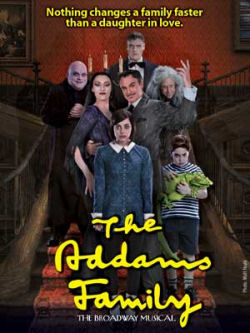
 Da-Da-Da-Dump (snap) (snap)
Da-Da-Da-Dump (snap) (snap)
 Today, in the LA Times, there is
Today, in the LA Times, there is 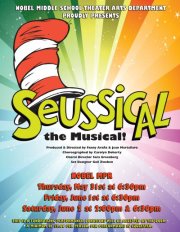
 Last night, we went to go see “
Last night, we went to go see “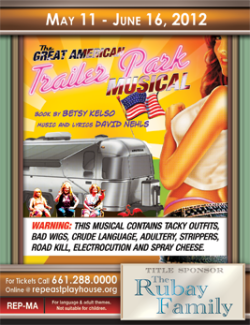
 Most of the time, when you see trailer parks, you don’t stop in. You drive on past, oblivious to the goings-on inside. We’ll I’ve got a trailer park that is worth visiting–“Armadillo Acres”, in Starke FL. Now, to make your life a little easier, you can find “Armadillo Acres” in old-town Newhall, right next to a Mexican restaurant.
Most of the time, when you see trailer parks, you don’t stop in. You drive on past, oblivious to the goings-on inside. We’ll I’ve got a trailer park that is worth visiting–“Armadillo Acres”, in Starke FL. Now, to make your life a little easier, you can find “Armadillo Acres” in old-town Newhall, right next to a Mexican restaurant.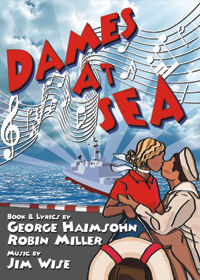
 Some musicals you go to for their deep social content–an example might be “
Some musicals you go to for their deep social content–an example might be “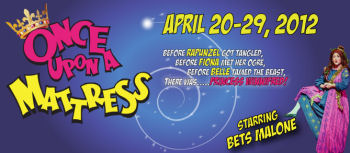
 Once upon a time in the musical theatre, stories were light and (with the exception of Rogers and Hammerstein) not filled with social commentary or import. These were the days you could lose yourself in the sillyness of the show, and just relish in beautiful music, wonderful lyrics, and great performances. Last night, we saw one of those shows when we went out to Thousand Oaks to see
Once upon a time in the musical theatre, stories were light and (with the exception of Rogers and Hammerstein) not filled with social commentary or import. These were the days you could lose yourself in the sillyness of the show, and just relish in beautiful music, wonderful lyrics, and great performances. Last night, we saw one of those shows when we went out to Thousand Oaks to see 
 Back in the 1980s, when driving back from the San Fernando Valley to Brentwood, I was listening to KCRW when the song “Just a Waitress” came on the radio. I fell in love with the song, and eventually learned it came from the Stephen Schwartz musical
Back in the 1980s, when driving back from the San Fernando Valley to Brentwood, I was listening to KCRW when the song “Just a Waitress” came on the radio. I fell in love with the song, and eventually learned it came from the Stephen Schwartz musical